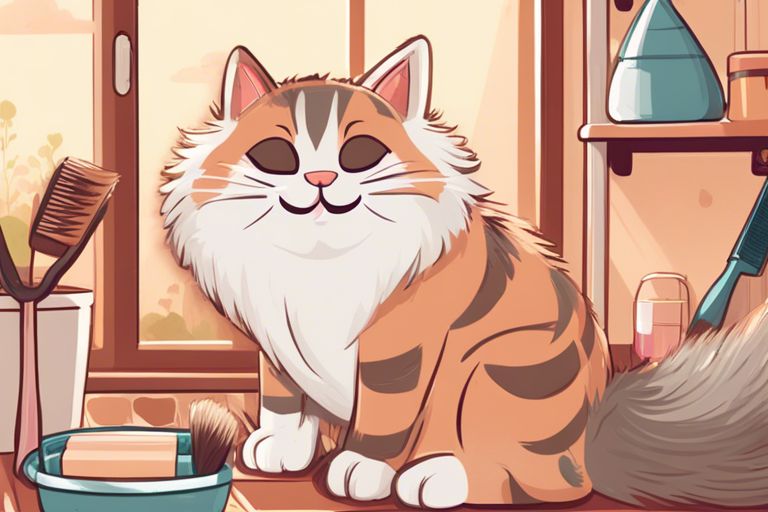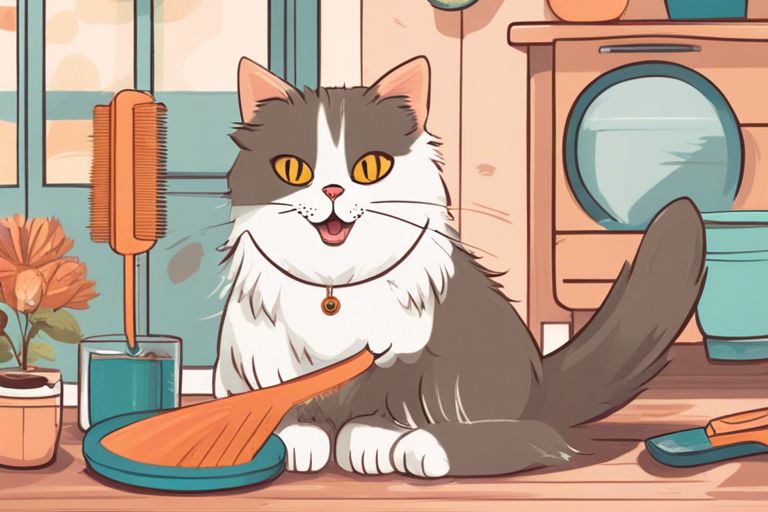Experiencing excessive shedding from your cat can be frustrating, especially when it seems to be taking over your entire house. In order to manage this issue effectively, you need to consider several important factors. Understanding the root causes of shedding, implementing a proper grooming routine, and creating a healthy environment for your cat are crucial in managing excessive shedding. In this blog post, we will explore the best ways to handle shedding in cats, providing you with the necessary insights to keep your furry friend’s shedding under control.
Key Takeaways:
- Regular grooming: Brushing your cat regularly can help reduce shedding and prevent mats in their fur.
- Proper nutrition: Providing your cat with a balanced diet can help promote healthy skin and coat, leading to reduced shedding.
- Consult a veterinarian: If you notice excessive shedding or changes in your cat’s coat, it’s important to seek professional advice to rule out any underlying health issues.
Factors Affecting Shedding in Cats
Some factors affecting shedding in cats include:
- Breed: Certain breeds may shed more than others
- Season: Cats tend to shed more in the spring and fall
- Health: A cat’s overall health can affect shedding
- Diet: The quality of a cat’s food can impact shedding
Though shedding is a natural process for cats, you may find that certain factors can influence the amount of shedding in your furry friend.
Breed and Hair Types
Some cats are simply more prone to shedding than others. Long-haired breeds, such as the Persian or Maine Coon, tend to shed more than short-haired breeds like the Siamese or Burmese. Additionally, cats with double coats may shed more than those with a single coat. Understanding your cat’s breed and hair type can help you better manage shedding.
| Breed Type | Shedding Level |
| Long-Haired | High |
| Short-Haired | Low |
| Double-Coated | High |
| Single-Coated | Low |
Though genetics play a significant role in shedding, there are steps you can take to manage it.
Health and Nutrition
Your cat’s overall health and the quality of their diet can have a direct impact on shedding. A nutritious diet that provides the necessary vitamins and minerals can promote a healthy coat and reduce shedding. Conversely, poor nutrition or underlying health issues can lead to excessive shedding. It’s important to ensure that your cat’s diet supports their overall well-being to help minimize shedding.
Grooming Techniques for Shedding Management
The key to managing shedding in your cat is regular grooming. By incorporating a few grooming techniques into your regular routine, you can effectively minimize the amount of loose fur in your home and on your furniture.
Brushing and Combing Methods
The most effective way to manage shedding is by regularly brushing and combing your cat’s fur. This helps to remove loose fur and prevent it from ending up all over your home. Use a high-quality bristle brush or a fine-toothed comb to gently remove loose fur from your cat’s coat. For cats with longer fur, you may want to invest in a de-shedding tool to effectively remove loose undercoat fur.
Bathing and Professional Grooming Services
While most cats are self-groomers and do not require regular baths, giving your cat an occasional bath can help to reduce shedding. Use a gentle cat shampoo and lukewarm water to bathe your cat, making sure to thoroughly rinse out all soap to prevent skin irritation. Additionally, you may also consider professional grooming services for your cat. Professional groomers have the expertise and tools to effectively manage shedding and keep your cat’s coat healthy.

Tools and Products to Reduce Shedding
Your cat shedding can be reduced with the use of specific grooming tools and products. Regular brushing is essential to remove loose fur and prevent matting. There are also a variety of shedding control shampoos and supplements available that can help reduce excessive shedding and promote healthy skin and coat.
Recommended Brushes and Combs
When it comes to grooming tools for reducing shedding in cats, a high-quality shedding brush or comb is essential. Look for brushes with fine, closely spaced bristles that can effectively remove loose fur from your cat’s coat. Additionally, a grooming glove can be a useful tool for removing loose fur while providing a gentle massage for your cat. Regular use of these tools can help to reduce shedding and prevent fur from accumulating in your home.
Shed-Control Shampoos and Supplements
Shed-control shampoos and supplements can also be effective in reducing shedding in cats. These products are formulated with ingredients that promote healthy skin and coat, reducing excessive shedding. When choosing a shedding control shampoo or supplement, look for formulas that contain omega-3 fatty acids, biotin, and other essential nutrients that support coat health. Regular use of these products can help to maintain your cat’s coat and reduce shedding.
Home Environment and Lifestyle Adjustments
Not all cats will shed the same amount, and the amount of shedding can be influenced by the environment and lifestyle of your furry friend. Making some adjustments around your home can help minimize shedding and make it easier for you to manage.
Creating a Cat-Friendly Space
When it comes to reducing shedding in your cat, creating a cat-friendly space is essential. Make sure your cat has access to regular grooming tools, such as a brush or comb to help remove loose fur. Provide your cat with a cozy bed and a designated scratching post to minimize stress, which can contribute to excessive shedding. Additionally, make sure your cat has access to fresh water and a balanced diet to keep their coat healthy and minimize shedding.
Routine and Stability for Shedding Cycles
Establishing a routine for your cat can help minimize stress and reduce shedding. Consistency in feeding times, playtime, and grooming can help regulate your cat’s shedding cycles. Stress and anxiety can worsen shedding, so try to maintain a calm and stable environment for your cat. Providing a predictable routine and stable environment can help minimize shedding and improve your cat’s overall well-being.
What’s the best way to handle shedding in cats?
Considering all points, the best way to handle shedding in cats is through regular grooming and a proper diet. Brushing your cat’s coat frequently can help remove loose fur and reduce the amount of hair it sheds. Additionally, a balanced diet with essential fatty acids can keep your cat’s coat healthy and minimize shedding. Keeping your home clean with regular vacuuming and using furniture covers can also help minimize the impact of shedding. And if shedding seems excessive, don’t hesitate to consult with a veterinarian to rule out any underlying health issues. By following these tips, you can effectively manage your cat’s shedding and keep your home fur-free.














